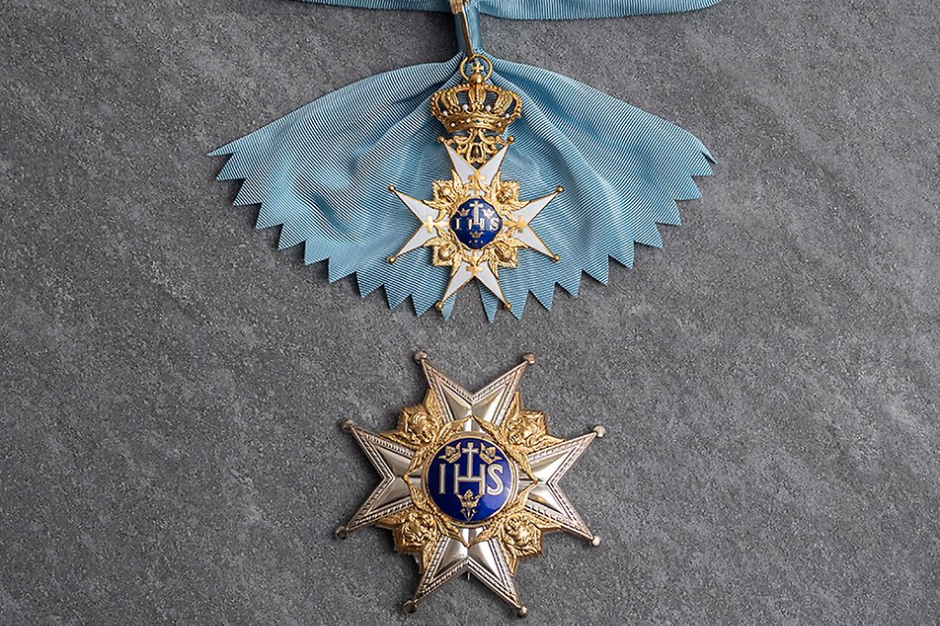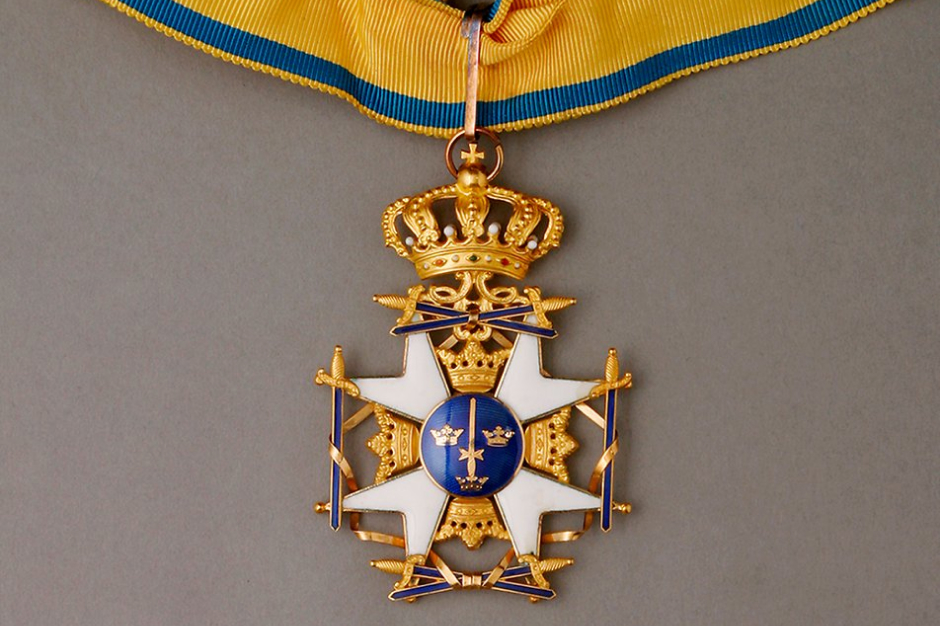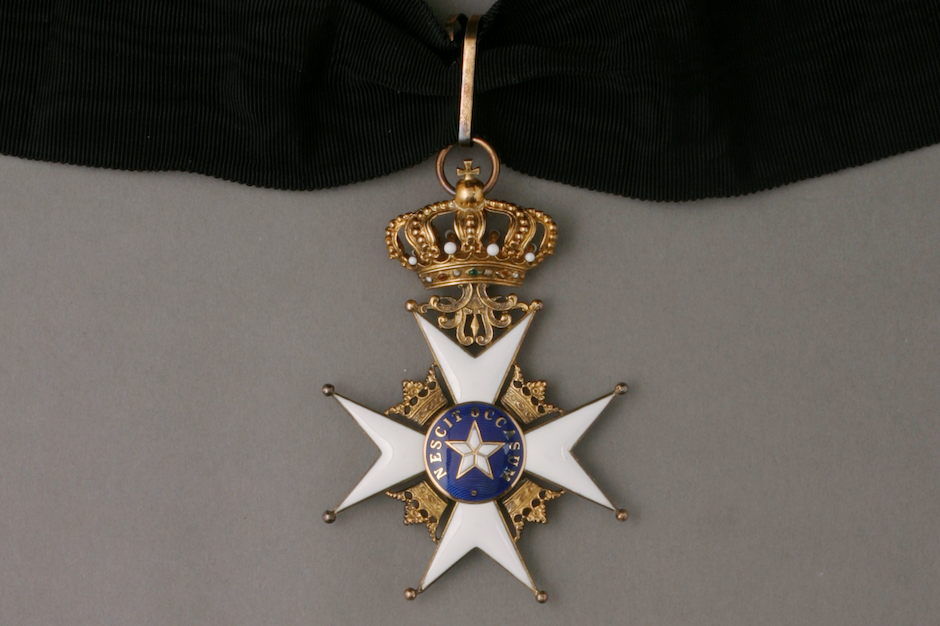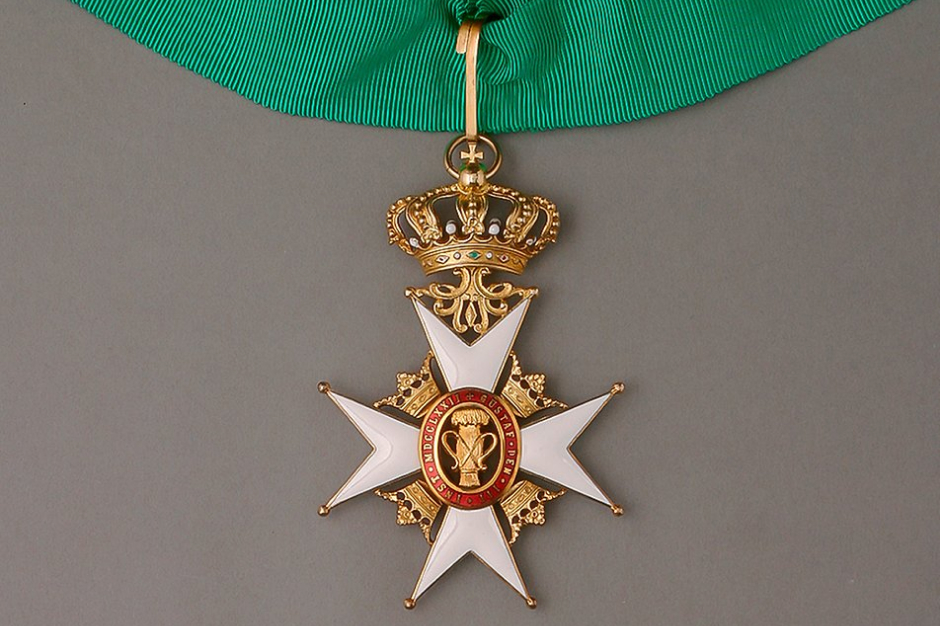The Orders of Knighthood
An Order was originally the term for an association of persons submitting to certain rules and regulations, such as monastic orders of monks and nuns.
The Royal Orders of Knighthood came into existence as a consequence of the religious revival of the Crusades in the early 12th century. They combined the orders of monks with secular chivalry, and aimed – among other things – to preserve the mediaeval pilgrimage routes.
Royalty found it advantageous to use orders to recognise various merits, forming the basis for what are now known as orders of state and orders of merit. Awarding an enamelled cross on a ribbon to be worn in public was a cheaper way to recognise outstanding achievements than issuing titles, landed property and pensions, and brought just as much status.
The King is Grand Master
In 1748, King Frederick I instituted the Royal Orders of the Seraphim, the Sword and the Polar Star. They were initiated by President of the Chancellery Carl Gustaf Tessin, who recognised the importance of conferring orders. King Gustav III instituted the Royal Order of Vasa in 1772 to create a comprehensive system of orders. The King is Lord and Master of the Swedish Royal Orders, or Grand Master as the position is now known.
The Rewards Reform means that everyone who has made personal contributions for Sweden or for Swedish interests from 2023 onwards can have awards conferred within the Royal Orders of Chivalry by decision of HM The King as Grand Master, on the Government’s recommendation.
In 1811, King Karl XIII instituted the Royal Order of King Carl XIII, which is an official order and is awarded by The King, but is not part of the Royal Orders of Knighthood. The Royal Order of King Karl XIII consist of 36 ordinary recipients (of which 33 are knights) and ten foreign recipients. There is also the Swedish Order of Saint John (Johanniterorden i Sverige), which has been an independent semi-official Swedish order of chivalry since 1920. King Gustav V was Grand Master of the Order from 1946 until 1950. Today, the order is led by a non-royal Commander, with The King as Supreme Patron of the Swedish Order of Saint John.



